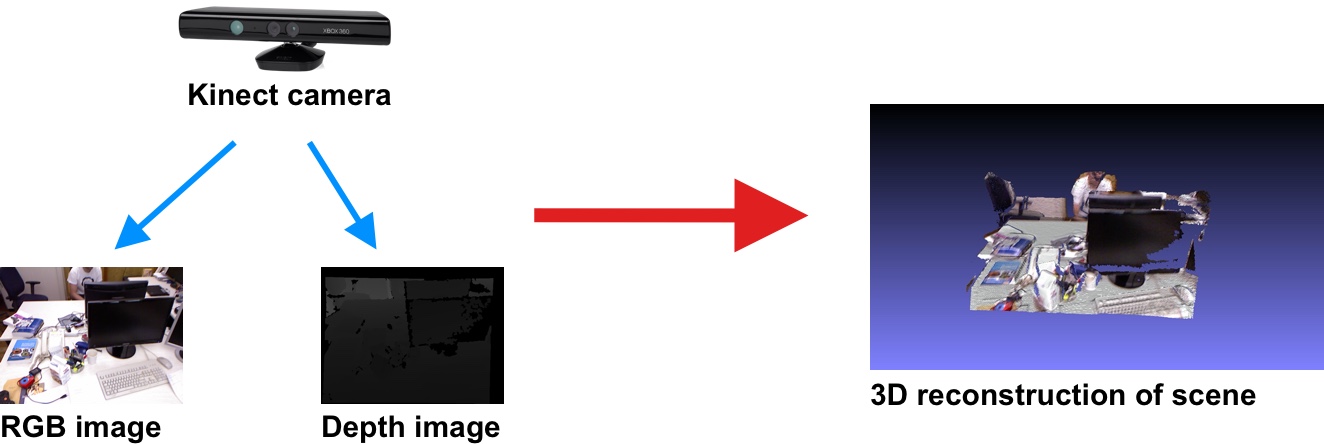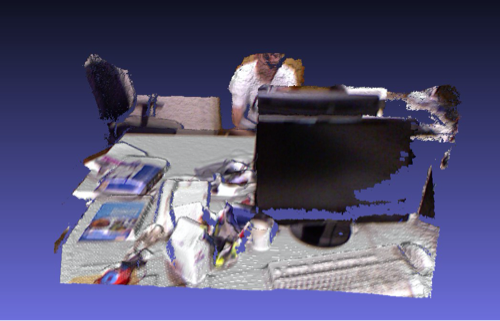The goal of this project is to obtain a 3D reconstruction of a static scene which was recorded with a Kinect camera. The Kinect camera provides RGB as well as depth information as can be seen in the picture below.

Below you can see a result of a raycast which was performed after ~120 frames.

First clone the repo with git clone https://github.com/VladimirYugay/KinectFusion.git.
-
Install
cmakeif it's not installed yet
sudo apt-get install cmake -
Run
sudo apt-get install libfreeimage3 libfreeimage-devin order to be able to process images from the dataset by simulating the virtal sensor -
Download header only Eigen library and put it into
libsfolder by runnning:
cd KinectFusion/libs
git clone https://gitlab.com/libeigen/eigen.git
Use any stable release (e.g. 3.4.0) as the upstream currently requires specific compiler versions (newer than GCC 9.3.0 and Intel 2021.4.0.20210910)
cd eigen
git checkout tags/3.4.0
- Follow the same file structure as in Linux Setup
- Add pre-compiled libraries of FreeImage in
KinectFusion/libs
brew install eigenbrew install freeimage
You can either use your own image sequence which was recorded with a Kinect Camera v2 or you can download the same dataset we used here.
Extract the folder and move it to KinectFusion/data/rgbd_dataset_freiburg1_xyz.
In order to build and run the project follow these steps:
cd ..
mkdir build
cd build
cmake ..
make
./kinect_fusion
If you want to contribute, please use cpplint.
You can install it via pip install cpplint and run with: cpplint [OPTIONS] files.
You can find GPU implementation on vy/unstable/gpu_integration and vy/icp/gpu_icp_pose_estimation branches
Things implemented on CUDA
- Finding correspondences
- ICP linear system construction
vy/icp/gpu_icp_pose_estimation - Volume integration
| CPU | GPU | Ratio |
|---|---|---|
| Correspondences: 138,609 | Correspondences: 23,792 | 6 |
| Volume integration: 8,787,468 | Volume integration: 694,208 | 12 |
| Linear System: 277 | Linear System: 488 | 0.7 |